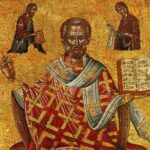
Wesak Day
Wesak is a holiday festival known as Buddha Day that begins on the day of the full moon in May and is considered the most sacred holiday to Buddhists all over the world. It was on this day that the Buddha obtained enlightenment, and it was also on this day that the Buddha died at the age of 80.
This day is known as Buddha Purnima, Vesak, Buddha Day, and Buddha Jayanti and is traditionally celebrated by Buddhists but is also observed by some Hindus in southern and southeastern Asia, Mongolia, and Tibet. This is a public holiday in those areas, and as such, the general population has the day off.
The History of Wesak
Buddhism began during the late 6th century B.C.E. by Siddhartha Gautama. Siddhartha Gautama was a member of a wealthy family that lived in Nepal, and he lived a life full of privilege and extravagance.
Then one day, all of that came to an end when he realized that everyone eventually gets old, sick, and dies. This is when he decided to set his life of luxury aside and instead wander the countryside looking for the true meaning of life. During this time, he studied yoga extensively and thought that perhaps fasting was his true path to enlightenment.
Neither of these things helped him achieve the enlightenment he sought. He only obtained enlightenment once he realized that neither fasting nor self-indulgence would help him on his path. Once he realized this fact, he was able to find enlightenment and became known as the Buddha, the enlightened one.
In Sri Lanka in 1950, the first conference of the World Fellowship of Buddhists decided to celebrate Wesak as the Buddha’s birthday, and it was this year that the decision was officially formalized. Although festivals celebrating the Buddha’s birthday are nothing new and have been celebrated for hundreds of years, this gave the holiday a set day on the lunar calendar.
In 2000, the United Nations decided to observe this holiday internationally at all of its offices. The name Vesak comes from the Sanskrit word Vaisakha, which is the name of the lunar month falling between April and May on the Gregorian calendar.
Wesak Customs, Traditions & Celebrations
This holiday kicks off when Buddhists gather at dawn in their temples. While they are in the temple, they are supposed to meditate on the precepts of Buddhism that will help them on their journey to enlightenment. These precepts include speaking wisely, embracing celibacy, honoring life in everything they do, and showing generosity and goodwill to their fellow citizens.
They are encouraged to eat only at prescribed hours and completely abstain from alcoholic beverages during this time. People are also encouraged not to oversleep and to avoid adorning one’s body during this time.
This day launches a three-day festival where people pray, attend religious services, and make donations to charity. They also make offerings of candles and flowers—gifts to remind everyone that life is fleeting. After all, candles eventually burn out and melt down to nothing, and flowers wilt and die over time. Over the course of this festival, people will also hand out and hang up flags of the Buddha.
Another common tradition that happens at this time is the symbolic washing of the Buddha’s statue. It is believed that by ritually washing the statue, a person can help to purify their own spirit. When this festival comes to an end, a parade featuring decorated floats and Buddha statues takes place.
Alongside these processions, people will often carry candles and lotus flowers. In other parts of the world, this holiday is observed by giving gifts to the poor, ceremonial washings of Buddha statues, and by paying homage to the Buddha.








